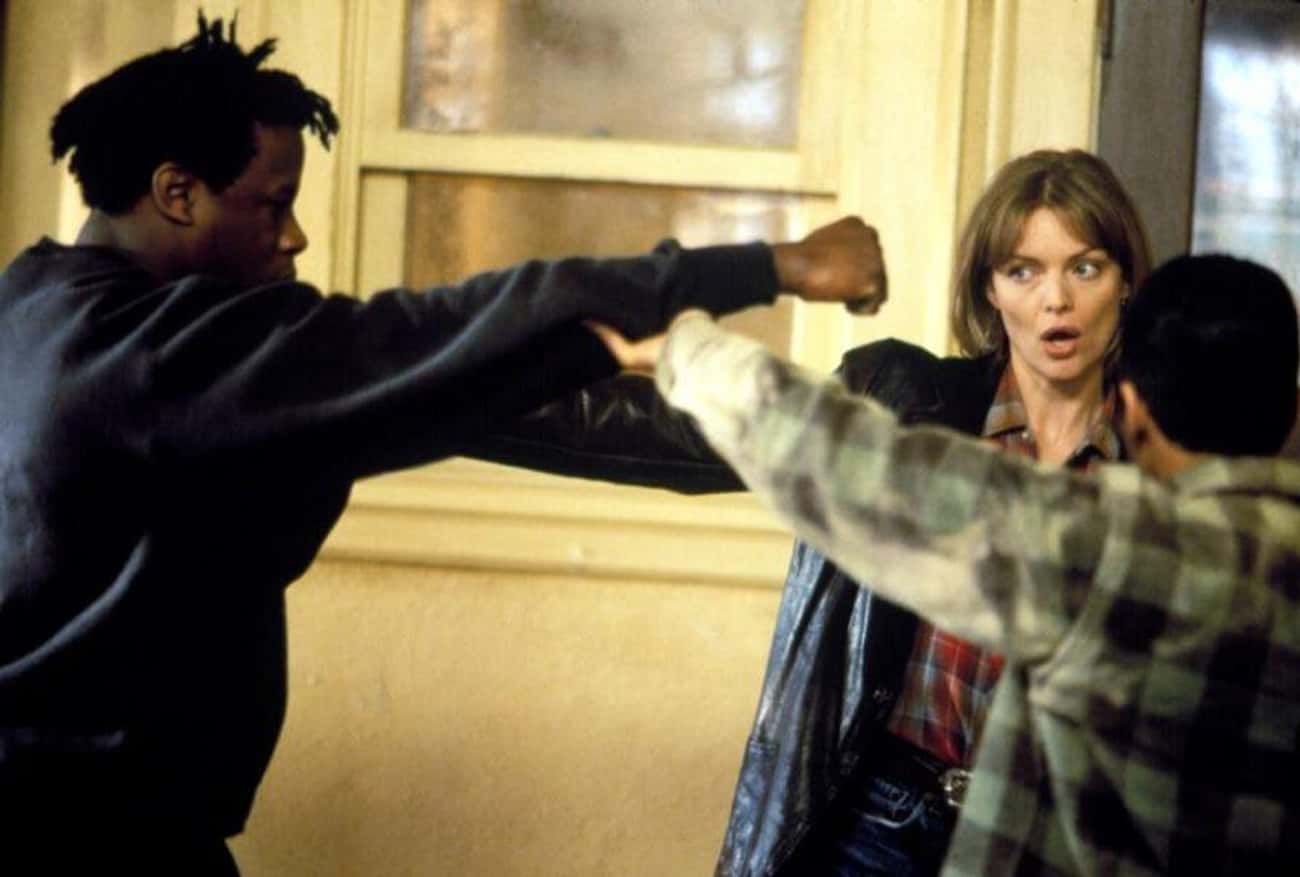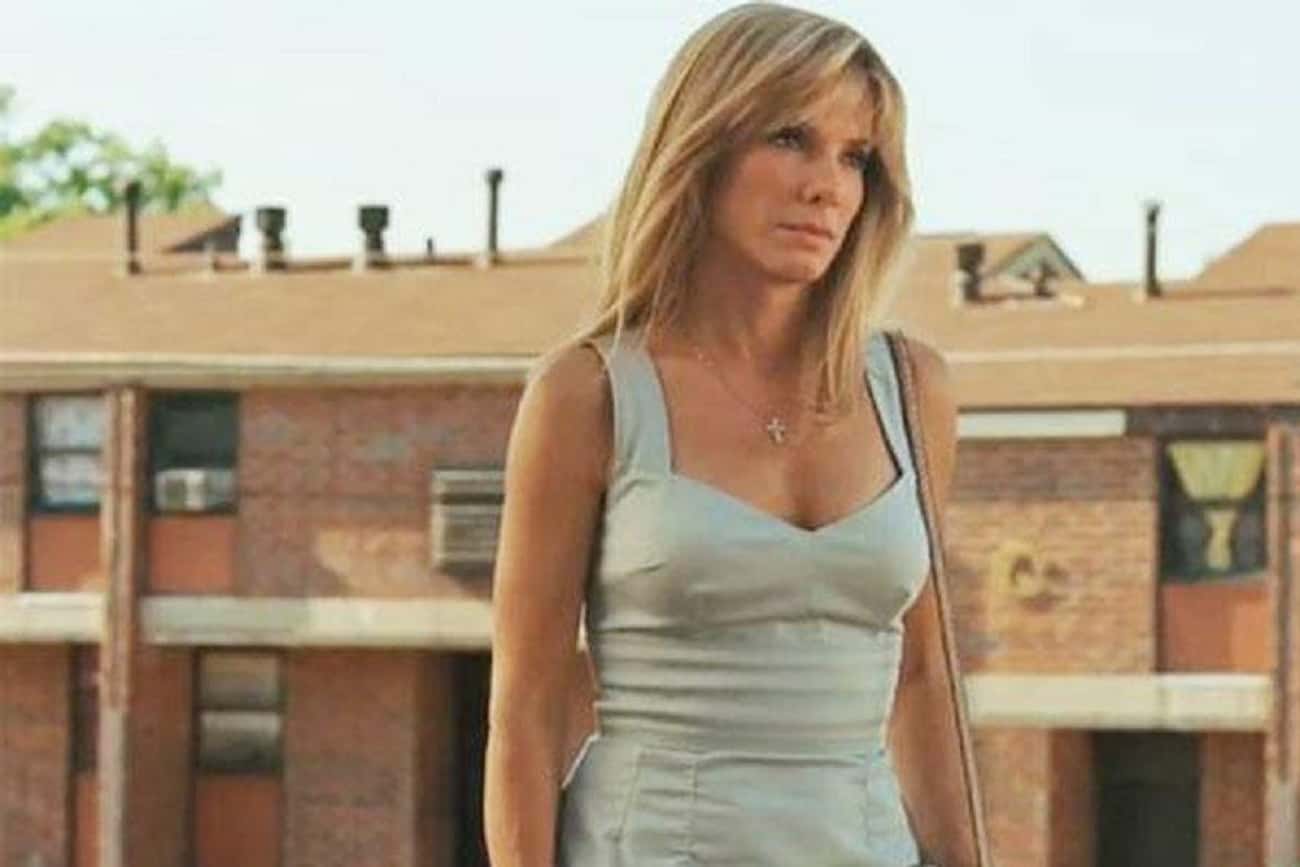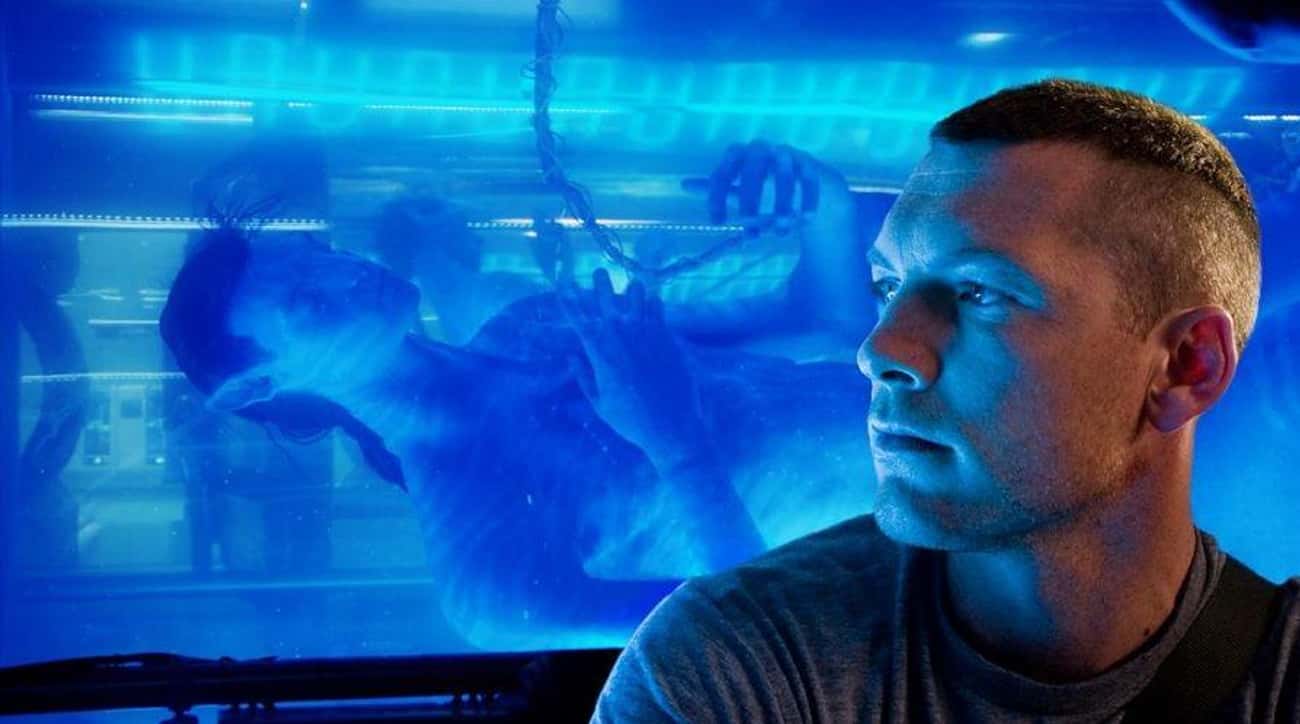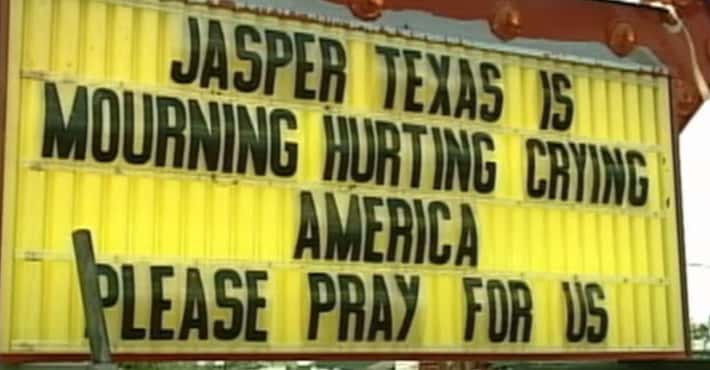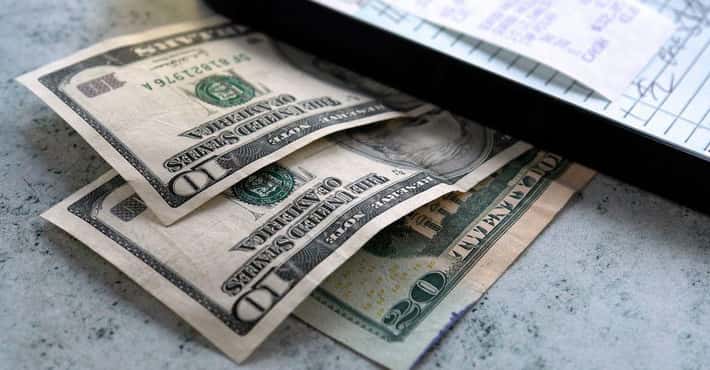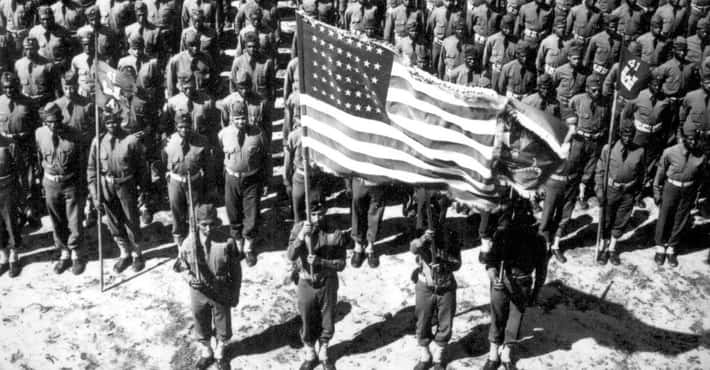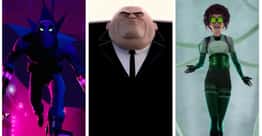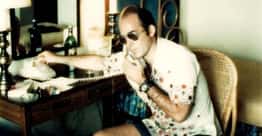15 Of The Whitest White Saviors In Film History, Ranked
Vote up the most cringe-worthy of the white savior trope.
- 1354 VOTES
Louanne Johnson In 'Dangerous Minds'
- Photo:
- Buena Vista Pictures
Been spending most our lives living in a... world of cheesy bad movies, and that is Dangerous Minds to a T. The acting was bad (Pfeiffer was okay); the dialogue was vapid; and it got a lousy 1.5 stars from Ebert. But what's most annoying is how overused the “how do I reach these kids” narrative is. This is another true story, based on the 1992 book by ex-marine turned rebel teacher, LouAnne Johnson: My Posse Don’t Do Homework. The real LouAnne Johnson had a problem with how the makeup of the class was portrayed in the movie.
“In my class, the kids were evenly mixed: Black, white and Hispanic,” she told The Guardian. “In the movie they made it all minority kids with a token white kid here and there. That perpetuates this myth that only minority kids are at risk, and that white kids don’t have any problems.”
At least we got one good thing out of it: Coolio’s "Gangsta’s Paradise." Oh, and also maybe the best parody song in the world out of that.
- Photo:
- 2697 VOTES
While The Blind Side is a true-story, it’s on screen portrayal is almost sickening with its endless amounts of clichés. In the film, Sandra Bullock plays Leigh Anne Tuohy, a trophy wife who, out of the kindness of her southern belle heart, took in a homeless Black teenager named Mike Oher.
The infuriating thing was that the film was nominated for Best Picture at the Academy Awards in 2010. Sandra Bullock also won Best Actress for her role in it. But the film was simply not good. Mike Oher was too timid and too thankful to the Touhys. Leigh Anne was too loud, in both appearance and demeanor. It all seemed like a bad sitcom.
“Blind Side the movie peddles the most insidious kind of racism, one in which whiteys are virtuous saviors, coming to the rescue of African-Americans who become superfluous in narratives that are supposed to be about them,” said film critic Melissa Anderson from The Village Voice.
More Leigh Anne Tuohy- #191 of 339 onThe Greatest Female Characters In Film History
- #6 of 29 onThe Most Inspirational Movie Mothers
- #63 of 82 onThe Very Best Actress Performances, Ranked
- 3453 VOTES
You may not think about Avatar as being a white savior film right off the bat, but it most certainly is one. A disabled, white marine by the name of Jake Sully infiltrates a tribal alien society with an avatar and all of a sudden he is more Na’vi than the actual Na’vi on Pandora. The film was breathtaking, but it doesn't just produce a white savior; Avatar gives viewers a white messiah. Jake is “the one” who has tamed wild beasts even the most experienced Na’vi warriors haven’t been able to overcome. He then goes on to save the entire race of Na'vi from the very people he conveniently chooses to not identify with anymore. He’s like the Rachel Dolezal of outer space.
David Brooks, writer at the New York Times, explained how films like Avatar strip away the accomplishments of others: “[the movie] creates a sort of two-edged cultural imperialism. Natives can either have their history shaped by cruel imperialists or benevolent ones, but either way, they are going to be supporting actors in our journey to self-admiration,” he said.
More Jake Sully- #858 of 1,218 onThe Best Movie Characters Of All Time
- #12 of 46 onThe Greatest Disabled Characters in Film
- #13 of 25 on25 Boyfriends In Science Fiction, Ranked From Most To Least Supportive
- 4270 VOTES
Blood Diamond director Edward Zwick has an obsession with the white savior narrative. You just need to look at his films Glory or The Last Samurai to understand that people of color can’t attain their goals without the help of a hardened white man, who in the process of freeing the oppressed, discovers he’s changed his outlook on life. Yeah, that's also Blood Diamond in a nutshell.
Set during the 1999 civil war in Sierra Leone, Leonardo DiCaprio plays Danny Archer, a pretty racist diamond smuggler. When he meets Solomon Vandy (Djimon Hounsou), a local fisherman who has found a massive pink diamond, he agrees to help locate Vandy’s kidnapped son. Initially, Archer’s interests in Vandy were solely monetary. But, as the characters in Zwick's films tend to do, Archer has a change of heart and risks it all - including his very life - for Vandy.
The film got mixed reviews, with some critics commenting on the savior complex of the movie.
“Much like Zwick’s Glory and The Last Samurai, Blood Diamond strives to be an ‘important’ film while stopping well short of being genuinely provocative and artistically chancy. Basically, Zwick attaches a well-meaning, self-congratulatory message to a cardboard action movie in which Africans are reduced to noble sufferers or collateral damage,” said a critic from A.V Club.
- 5215 VOTES
Coach Harold Jones In 'Radio'
- Photo:
- Columbia Pictures
The movie Radio is uncomfortable to watch on so many levels. For one thing, you never go full-on mentally disabled in a film because of the extremely likely chance that you're going to trample all over real, complex people with cognitive issues with your bad acting. But Cuba Gooding Jr. really, really went for it. It’s almost hard to tell who the film is most insulting to. Yes, the film tears at the heartstrings, but its whining, melodramatic sap becomes unbearable after a certain point.
The film come from a Sports Illustrated article by Gary Smith that's based on a real-life story. The article was written about the true Coach Jones and his buddy James “Radio” Kennedy. It’s hard to say how true to the real story the film is. But in the film, Jones, played by Ed Harris, is portrayed like a total saint for looking after Radio.
- Photo:
- 6284 VOTES
How would Arabs defeat the Ottoman Empire if it weren’t for a tall gangly blond haired blue-eyes super savior? Lawrence of Arabia completely perpetuates the idea that non-white people simply cannot do things as well if it weren’t for the help of people like Lawrence, a very heterosexual white male in a position of power. Lawrence and Jake Sully from Avatar actually have a lot in common. This largely stems from the fact that Lawrence begins to show disdain for his own race and nationality. There comes a point in the film wherein he doesn’t just want to save the Arabs, he wants to be them. He wants that oriental mysticism to encapsulate his life. But at the same time, Lawrence still feels superior and is not shy about passing judgment on the Arabs who he has called “cruel and barbarous.”
But there is a big difference between Sully and Lawrence. Lawrence eventually realizes he can no longer live the lie. He realizes that he may have brought more destruction on the people he admired than he actually brought good.
- 7386 VOTES
What really pissed people off about The Help was that the lives of Southern Black maids were narrated primarily through the voice of a young white girl, Skeeter Phelan (played by Emma Stone). There were even cries to boycott the movie before it premiered. But director Tate Taylor doesn’t think people are judging his film fairly.
“What I’ve discovered is that many people who [criticize the movie], usually about 80 percent, have not read the book, which I find a little frustrating,” he told CNN. “Frankly, Skeeter is not the ‘great white hope’ in the book or in the movie. The people in charge of their lives are Aibileen and Minny, so they therefore teach Skeeter and in turn teach Jackson (Mississippi).”
- 8356 VOTES
Sebastian In 'La La Land'
- Photo:
- Summit Entertainment
The 2016 film La La Land received a ton of backlash for its white savior narrative. In the film, Ryan Gosling plays Sebastian, a jazz musician who falls in love with an aspiring actress. But, the film has been heavily criticized for Sebastian's mission to “save jazz,” a genre he thinks is deteriorating. The film has also been accused of trying to take credit for Black musicians' accomplishments.
In the film, singer John Legend played Keith, Sebastian’s buddy and bandmate. Legend had a pretty different take on the white savior trope of the film.
“Sebastian was stuck in that traditionalism. The film doesn’t necessarily approve of how traditionalist he is. The film agrees with Keith when he says, ‘How are you going to be a revolutionary when you’re such a traditionalist?’ I don’t think Sebastian is seen as the savior people are saying it is. He’s a flawed character that is a bit dark and stubborn, but he’s also an interesting guy,” Legend told Newsweek.
- Photo:
- 9230 VOTES
This is another one of those educator-turned-mentor white savior narratives that Hollywood cannot get enough of. In the film, Sean Connery plays William Forrester, a grumpy and reclusive novelist. Forrester takes Jamal Wallace, played by Rob Brown, under his wing after Wallace breaks into Forrester’s home on a dare. In a scurry to get out of the house, Wallace leaves his backpack behind, which contains some of his writing. Forrester goes through his bag and reads his work, which impresses him.
Naturally, Wallace’s writing improves under the tutelage and guidance of Forrester. Forrester, having helped Wallace find his voice, in turn finds himself, hence the lame and obvious title. Perhaps the most annoying thing is that no one believes that Wallace could actually have the talent to write as well as he does, and only at the end of the movie does Forrester come out of hiding and clear Wallace’s name.
- 10339 VOTES
Walt Kowalski of Gran Torino isn’t your typical white savior. He’s a son-of-a-b*tch, racist Korean War vet with a serious chip on his shoulder. He dislikes the changes happening to his Detroit neighborhood, and he can’t seem to interact with any non-white person without issuing some hateful remark. But this all changes after Kowalski’s Hmong neighbor tries to steal his Gran Torino, and Kowalski takes it upon himself to right the boy.
Although the film stereotypes Asian Americans, many Hmong praised Eastwood for bringing the Hmong community in America some publicity.
“Eastwood is a miracle in the Hmong community. I hope that this really sheds some light... it tells people that Hmong exist and that we helped in the war. My own father was recruited to fight for the US when he was only 14,” said actress Brooke Thao, the woman who played the mother in the film.
- 11134 VOTES
Steve Lopez In 'The Soloist'
- Photo:
- Paramount Pictures
Another true story mangled into a white savior drama flick, The Soloist, is the about the real relationship that formed between journalist Steve Lopez, played by Robert Downey Jr., and schizophrenic homeless cello player Nathaniel Ayers, played by Jamie Foxx. Lopez tries to “save him” and ends up landing Ayers a recital, but the audience is left feeling that Lopez never fully got through to Ayers.
“We see a connection between the two men, but not communication,” wrote Roger Ebert.
- Photo:
In Indiana Jones and The Temple of Doom, Indy takes it upon himself to save an entire village from the evil workings of some deranged cult. Indy might be one of the most glorified white saviors in film history. He’s always working to help some street urchin or plight-stricken, dark-skinned community, and certainly women are always in distress and in need of saving. If Indy isn’t there, you’re essentially f*cked.
It would be easier to hate if he didn’t look so good in the movie. Was that one-torn off sleeve so necessary?
More Indiana Jones- 13231 VOTES
Irv Blitzer In 'Cool Runnings'
- Photo:
- Buena Vista Pictures
Yes, this is a white savior narrative through and through. Yes, this Jamaican bobsled team practically begged Irv Blitzer (John Candy) to coach them in the Olympics. Yes, the dynamic between the Blitzer and the bobsled team is lighthearted and funny enough that you can look past the savior complex because the film is so uncomplicated.
Unfortunately, the movie, which has been spouted in the past as being based on a true story, is largely fabricated.
- Photo:
- 14302 VOTES
Dr. King Schultz (Christoph Waltz) may have unchained Django, but once freed, Django held his own pretty well. Django Unchained was intended to be more of a comedic film, which might have started off with a white savior trope, but it then turned into an almost buddy comedy situation. And the Black actors in the film, though suffering, were totally bad*ss in their own right. Except for Samuel Jackson, who developed Stockholm syndrome for his “master.”
Django and Shultz very well may have become Tarantino’s best interracial pals since Vincent and Jules.
More Dr. King Schultz- #87 of 116 onThe Most Tough-As-Nails Action Movie Heroes
- #758 of 1,218 onThe Best Movie Characters Of All Time
- #43 of 55 onThe Best Halloween Costumes With Beards
- 15371 VOTES
Classic book. Classic film. Not-so-classic tale of the white savior. Atticus (Gregory Peck) is a noble and likeable guy, and, despite the release year (1962), Atticus doesn’t have the same “holier than thou” persona that many of the other white saviors on this list display. Why is that? Because he ends up failing. Atticus is a lawyer who is asked to defend a clearly innocent Black man, Tom Robinson (played by Brock Peters), who has been accused of raping a white girl in 1930s Alabama. But Atticus cannot fight through the prejudice of the times, and Tom is found guilty and killed while in police custody.
More Atticus Finch- #106 of 116 onThe Most Tough-As-Nails Action Movie Heroes
- #70 of 1,218 onThe Best Movie Characters Of All Time
- #65 of 86 onMovie Tough Guys Without Super Powers or a Super Suit


